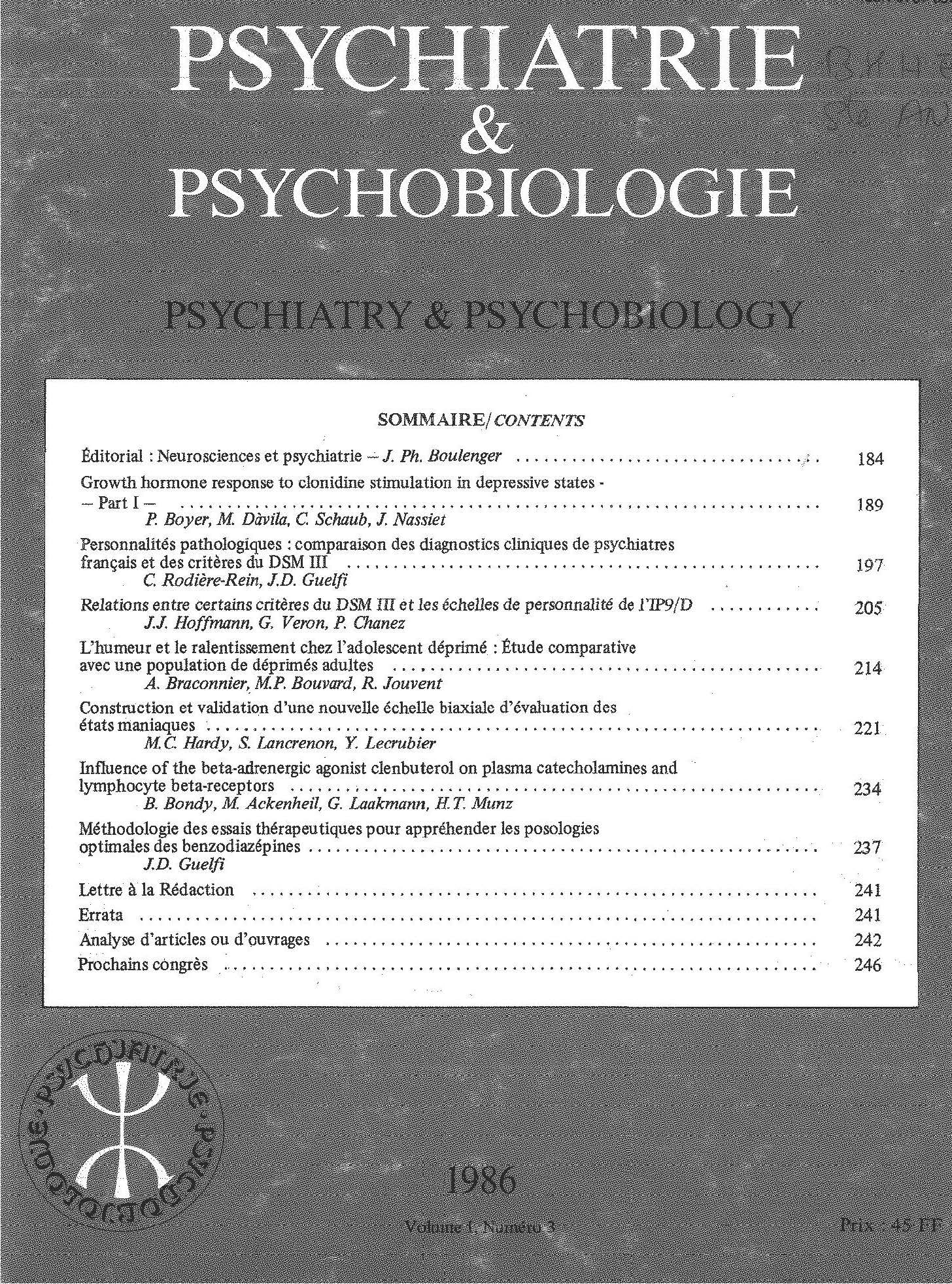Article contents
The impact of familial personality disorder and alcoholism on the clinical features of depression
Published online by Cambridge University Press: 28 April 2020
Summary
We compared patients with DSD or depression spectrum disease (family history positive for alcoholism or antisocial personality disorder in a first degree relative) to other depressives. DSD patients were likely to be diagnosed as having antisocial or borderline personality disorder, to be alcoholics, amphetamine abusers, or hysterics. They had more chronic depressive features, including hostility and self-pitying, bad-tempered, labile, and irritable mood, and they were nervous, worrisome, immature, overly dependent, and had tempestuous relationships. Their depressions were usually described as “reactive”, but their social outcomes were more likely to be poor.
Résumé
Nous avons comparé des patients atteints d’un “trouble appartenant au spectre dépressif “(Dépressive spectrum Disease (DSD)) caractérisé par l’existence d’antécédents familiaux d’alcoolisme et de trouble de la personnalité antisociale chez les parents du premier degré, à d’autres groupes de patients.
Comme l’indique le tableau 7, le diagnostic de trouble de la personnalité antisociale ou borderline a été plus souvent attribué aux patients atteints d’“DSD”; c’est parmi eux que se compte le plus grand d’alcooliques, des toxicomanes aux amphétamines, et d’hystériques. Ces patients présentent davantage de manifestations dépressives durables marqués par l’hostilité et l’auto-apitoiement, ainsi que par la morosité, la labilité et l’irritabilité de l’humeur; ils sont par ailleurs nerveux, soucieux, immatures, hyperdépendants, et leurs relations inter-personnelles sont mouvementées. La dépression de ces patients est habituellement qualifié de “réactionnelle”; les possibilités d’insertion sociale plutôt réduites.
L’analyse discriminante directe, confirme que ces variations ne sont pas dues au hasard. 88.2 % des 220 patients de l’étude ont été correctement classés. Ce pourcentage atteint 90.2 % lorsque les patients alcooliques sont exclus. Dans l’analyse discriminante pas à pas les pourcentages sont très proches (tableaux 2 et 3). Les troubles anxieux ne sont pas corrélés significativement au DSD dans les analyses comparatives à une seule variabgle ; en revanche la survenue tardive d’attaques de panique secondaires à la dépression sont significativement corrélées au DSD dans la totalité de l’échantillon. Lorsque les patients alcooliques sont exclus, l’anxiété généralisée de survenue tardive devient le coefficient discriminant canonique standart le plus élevé. Les auteurs ont à nouveau vérifié, dans cette étude la validité de la conception de Winokur qui tend à assimiler la maladie à spectre dépressif à l’ancienne catégorie diagnostique de la dépression névrotique.
Keywords
- Type
- Research Article
- Information
- Copyright
- Copyright © European Psychiatric Association 1987
Footnotes
Address correspondence to: Dr. C. VanValkenburg, Correspondance à adresser au Minnesota Security Hospital, 100 Freeman Drive, St Peter, MN 56082, USA.
References
- 1
- Cited by



Comments
No Comments have been published for this article.